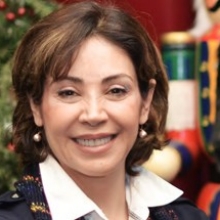“People complain today that we’re spoiling children, spending on things we don’t need, loading our credit cards with debt and getting stressed lining up to buy things — all for a few hours of joy. This is not new! A hundred years ago, the level of commercialization was already thought to be overwhelming and morally wrong,” says Warren, author of Hourra pour Santa
Claus!(Boréal), a book that explores the commercialization of the holiday season in Quebec from 1885 to 1915.
Warren relates that in mid-19th century Quebec, Christmas was just one of more than 200 annual religious celebrations.
In the midst of the industrial revolution, Canadians increasingly found themselves working in factories. Since the manufacturing cycle couldn’t stop every few days for a celebration, the number of compulsory holidays dropped drastically by the end of the 19th century.
“Traditionally, for Christians at the time, the big celebration was Easter and for French Canadians it was New Year’s Eve. Christmas stood in the shadow of those two holidays, but through a convergence of forces it became the dominant celebration of the year,” says Warren. “It was hijacked by big business and to a lesser extent the Church.”
Religious groups particularly in Quebec discouraged the celebration of New Year’s Eve because it was a pagan holiday and often led to immoral practices. “Sometimes the drunken debauchery went on for two weeks!” Warren reports.
Yet it’s the hand of business interests that was strongest. “The dominant ideology pushed people to work hard and amass as much money as they could, never spending a dime on unnecessary things. So there’s a problem — you’re producing goods but there’s no market to buy them,” explains Warren. “The solution was to reappropriate Christmas and connect commercial interests with Christian values — generosity and compassion — making it the biggest day of the year and the only day when conspicuous consumption was condoned.”
Christmas was wrapped up as a religious celebration on the outside, although in practice revolved around materialism. “Even 100 years ago, written records show Christians prepared a month in advance — not by saying their prayers or singing in church but by focusing on material things: the gifts, the tree, greeting cards, the yule log — and Santa Claus. What is he doing there? Why is it not about Jesus Christ?” asks Warren.
“In trying to replace New Year’s Eve as the central celebration of French Canadians, Roman Catholic priests made a deal with the devil, so to speak, and collaborated with big business to promote Christmas. They didn’t exactly lose, but the commercial aspects of Christmas have always, since the end of the 19th century, overwhelmed the religious ones.”
Retailers and consumers under pressure
The Bank of Montreal’s annual holiday spending outlook for 2012 reports that this holiday season Canadians are expected to spend $1,610 each — on gifts, entertaining, travel and other expenses — and the very survival of many retailers depends on it.
“More than 40 per cent of retail sales are generated in the fourth quarter, from September to January, so retailers really focus on this time of year,” says Robert Soroka, MBA 88, who teaches marketing at Concordia’s John Molson School of Business and School of Extended Learning, McGill University’s esautels Faculty of Management and Montreal’s Dawson College.
Over the last 20 years, consumers have benefited from an evolution in holiday discounting that stems from the recession of the early 1990s.
 Jean-Philippe Warren, associate professor of sociology and anthropology
Jean-Philippe Warren, associate professor of sociology and anthropology
 Robert Soroka, MBA 88
Robert Soroka, MBA 88
 André Gagné
André Gagné
 Roksana Bahramitash
Roksana Bahramitash
 Norman Ravvin
Norman Ravvin
 Shital Sharma
Shital Sharma